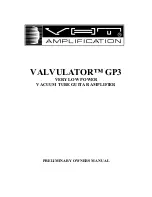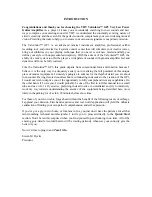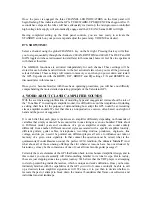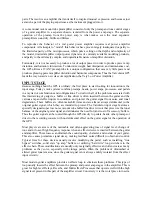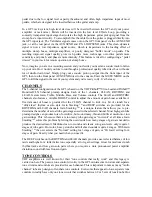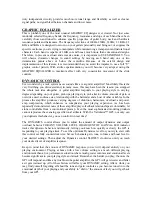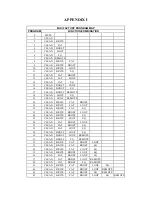
Once the power is engaged, the three CHANNEL LED INDICATORS on the front panel will
begin flashing. This indicates that the GP3s TUBE WARM-UP SEQUENCE has begun. After 15
seconds have elapsed, the tubes will have adequately warmed up, the microprocessor-controlled
high voltage tube supply will automatically engage and the CLEAN Channel LED will light.
Having completed setting up the front panel controls, you are now ready to activate the
STANDBY switch on your power amp and adjust the power amp VOLUME as desired.
IT’S SHOWTIME!
Select a channel using the global CHANNEL key on the far right. Pressing this key will allow
you to step sequentially through the channels, CLEAN, RHYTHM and LEAD. The DEEP and HI
GAIN toggle switches are discussed in detail later in this manual, however feel free to experiment
with them at this time.
The GLOBAL functions are activated independently for each channel. These settings will be
stored for each channel and will return to the last activated state when you recall the previously
selected channel. These settings will remain in memory even when you power down and restart
the GP3. Experiment with the BRITE, FAT, BOOST and EQ settings. F/X and REMOTE are
discussed later in this manual.
Once you’ve become familiar with these basic operating procedures, you will have no difficulty
comprehending the more detailed operating principals of the Valvulator GP3.
A WORD ABOUT CLASSIC AMPLIFIER SOUNDS
With the ever increasing proliferation of modeling hype and exaggerated claims about the role of
the “Tone Stack” in creating an amplifier sound, it is difficult to avoid the temptation of including
a setting chart here for the purpose of demonstrating how adept the GP3 would be at recreating
classic amplifier sounds. We feel that this is an unproductive exercise, often based on sleight of
hand and the power of suggestion.
It is our belief that each player experiences an amplifier differently depending on thousands of
variables that simply cannot all be accounted for in one sitting or even one hundred. Think about
it. Different model years and conditions of a given amplifier example can sound entirely
differently from another. Different musical styles associated with a specific amplifier tonality,
different guitars, guitar cables, microphones, recording studios, producers, engineers, line
voltage, and oh yes, need it be pointed out, different players all serve to influence our take or
memory of a given sonic signature. In that context the question must be raised, what is the
quintessential Fender Bassman sound, the perfect AC30 rendition, the ultimate Marshall? And
what about all of those unsung offerings that for whatever reasons have been overlooked by
historians, yet may be the cornerstone of one of your all time favorite guitar passages?
Certainly there are elements of the GP3 that harken back to time honored amplifier design, and in
this context, you most assuredly will find something familiar in its tonal recipe. But in reality,
these are just stepping stones in a greater journey. We believe that the VHT player is attempting
to develop something inside themselves, which is unique and seeks definition. Once you become
intimately familiar with the capabilities of the GP3 you will of course eventually be able to call
up a desired classic amplif ier signature at will. We leave it to you then to decide whether to
recreate the past or attempt to break down the musical boundaries that frame our collective and
individual musical landscape.

